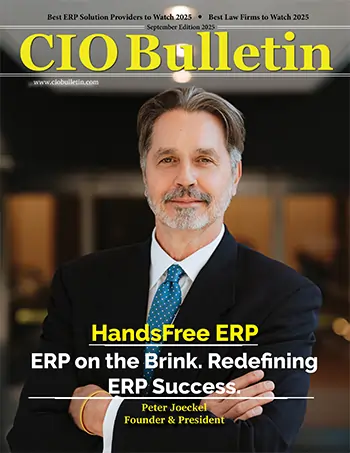CIO Bulletin

Data liberation empowers connectivity and control by eliminating data fragmentation, data duplication, data silos, and the need for costly and time-consuming data integration. With data collaboration, enterprise data is now available to whomever it's needed, able to move simply and freely to wherever it's needed. Organizations including TD bank, Colliers International, AIS, and Natixis use data collaboration to accelerate digital transformation projects and reduce the time and cost to build applications by more than 50%. Data collaboration decreases IT project delivery risks, establishes guaranteed data access controls, and enables effortless collaboration on quality data across an organizations’ people and systems.
With the world’s first comprehensive data collaboration platform that liberates data from enterprise apps and evolves it to a universal, fully collaborative data network, Cinchy is making integration obsolete. Organizations 'change how they deliver change' using cinchy to make it simple by liberating and productizing their data, making it available for secure real-time integration-free collaboration. Cinchy is part of the global movement for improved data control as a founding member of the Data Collaboration Alliance, a non-profit dedicated to advancing control as the foundation for meaningful data ownership, data collaboration, and accelerated innovation.
Robust End Data Integration with Data Collaboration
In the enterprise, collaborative intelligence is harnessing the collective intelligence of people (individuals and groups) with the power of technology to solve complex problems, make better decisions and drive better business outcomes. Data being tied to specific applications is an artifact of the way data technology developed from the early mainframe computers: first came the app, and then came its data. As database technology advanced, this relationship remained the same, the app-data relationship worked well enough. In today's advanced architectures continuing to use data models that require endless, ongoing integrations ultimately lead to their collapse, from inherent and overwhelming levels of complexity. A Data Collaboration Platform is the architectural model that evolves your data into a fully collaborative data network. Data Collaboration empowers connectivity and control by eliminating data fragmentation and data duplication and the need for costly and time-consuming integration.
The Cinchy Data Collaboration Platform liberates data from applications and allows you to manage and control data as products, eliminating the need for future data integration. The result is a more agile data ecosystem that makes change simple, rapidly accelerates business outcomes and fosters collaborative intelligence across the enterprise. With the Cinchy Data Collaboration Platform connect enterprise data in a network and make it available for real-time collaboration, without the need for integration. Eliminate the burden of integration pain – reduce people dependencies, data contract rigidity, and infrastructure complexities – so you can cut project costs and time to deliver in half. With the Cinchy Data Collaboration Platform get the agility to make delivering tech change simple, rapidly accelerate business outcomes, and foster collaborative intelligence across the enterprise.
The Data Collaboration Platform in the enterprise can be generalized into two components:
Data Liberation: Data being tied to specific applications is an artifact of the way data technology developed from the early mainframe computers: first came the app, then came its data. As database technology advanced, this relationship remained the same, the app-data relationship worked well enough. In today's advanced architectures continuing to use data models that require endless, ongoing integrations ultimately lead to their collapse, from inherent and overwhelming levels of complexity. With liberated data, there's no need for integration efforts or copying databases to get multiple applications to work together. Liberated data creates an environment where any user can access data directly, under defined access governance.
Liberated data is based on a semantic model that does not have to map to any specific system or application. The result is a completely different kind of data. Data that can be extended beyond individual applications, easily interconnected with other data and managed through a self-serve data browser. Users become data 'creators', with the ability to grant further federation and governance to others as needed.
Data Productization: Data productization creates and uses data products in a meshed structure to ensure data for business entities is always directly available and easily accessible. Taking the complexity out of operational data management and making it simple. Data product corresponds to a dataset that includes one or more business entities, such as customers, employees, assets, suppliers, orders, campaigns, and so on. The data for these entities usually originate in various siloed source systems that are often different in technology, structure, format, and terminology. Data productization uses data products to ensure that everything the data consumer needs to derive value from the data of a particular business entity is available and accessible. This includes the product's metadata (both static and active), the raw data, lineage to the source systems, collaboration logs of data changes and access controls.
Data productization allows for a comprehensive 360-degree view of vital entities such as customers, their orders and the most profitable product lines. With easy access to data products, teams no longer have to waste precious time searching for and processing data into the right format. A no-code model to manage and change the data ultimately avoids creating an architectural mess and eliminates ongoing governance challenges.
About | Dan Demers
Dan DeMers is a co-founder and the CEO of Cinchy, the world’s first comprehensive Dataware platform. Dan spent over a decade as an IT executive with the most complex global financial institutions where he was responsible for delivering mission-critical projects and technology investments. Knowing that half of all IT resources were wasted on data integration, Dan created Cinchy with the vision to simplify the enterprise data collaboration experience.







